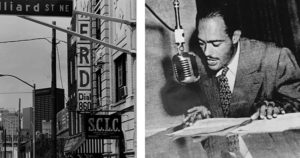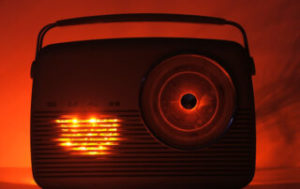Starting around the 1920s until about the 1950s, Americans relied on the radio for almost all forms of entertainment and news each evening. Families would sit around and listen to—not watch—a variety of programs that would strike fear in the listener or make them want to get up and dance. The Golden Age of radio is often what this particular time is called, and I find it a really fascinating time in American history. I’m a huge fan of podcasts and audiobooks, so the concept of the radio acting as one of the few ways of getting information doesn’t seem that strange to me. But I know that I’m an exception to the generations that have grown up with the internet looming so large in our lives. So, when I heard that there was a digital exhibit from the University of Indiana and a Golden Age of Radio program coming up, I figured I could spotlight them. Two birds with one stone, you know?
The Golden Age of Black Radio
A digital exhibit from the Archives of African American Music and Culture at University of Indiana

The University of Indiana’s Archives of African American Music and Culture has gathered numerous sound recordings, interviews, pictures and other archived items to showcase their Golden Age of Black Radio digital exhibit. The exhibit is free to anyone and can be found here. Broken up into four sections, you can get a rich history of how the African American community became connected in a way they hadn’t before through radio. The primary focuses that the collection looks at are the beginning of the Golden Age, disc jockeys and their contributions to radio, how radio unified communities and gave members the avenues to help each other and how the wide reach of radio helped to unite a national movement for both the Civil Rights movement and feminism.
The thing about the exhibit that stood out to me the most was the interviews with various radio personalities and academics. There were some really fascinating stories about interactions between DJs and the characters they would create for the air. The radio personalities also understood the larger role they played in the community as some of the only trusted news sources. When we look back on much of our history, we miss the personal stories that give the whole view a little bit more substance. As of now, there isn’t an end date for the exhibit.
Lights Out Everybody: Mystery and Horror During the Golden Age of Radio
Thursday, November 10, 7 p.m. via Zoom

It’s been 100 years since the radio was introduced to the United States. And while it was a great tool for music and news, it was also one of the main sources of storytelling more along the lines of what you would see on television during the primetime slot. With your imagination as the film crew, the radio told stories over the airwaves that would be uplifting or terrifying. The power of radio drama was so strong that in the 1930s, a presentation of H.G. Wells’ The War of the Worlds, read by Orson Wells, was so realistic and captivating that it cause mass panic on the eastern seaboard because people thought it was real. And our event, presented by Steve Darnall of Nostalgia Digest, takes us back to the spookier side of the “Theatre of the Mind”. Using sound clips from such shows as Inner Sanctum, Lights Out and Escape, we will explore what made these shows and the stories they told so gripping. You can register for the event here. Hope to see you then!
